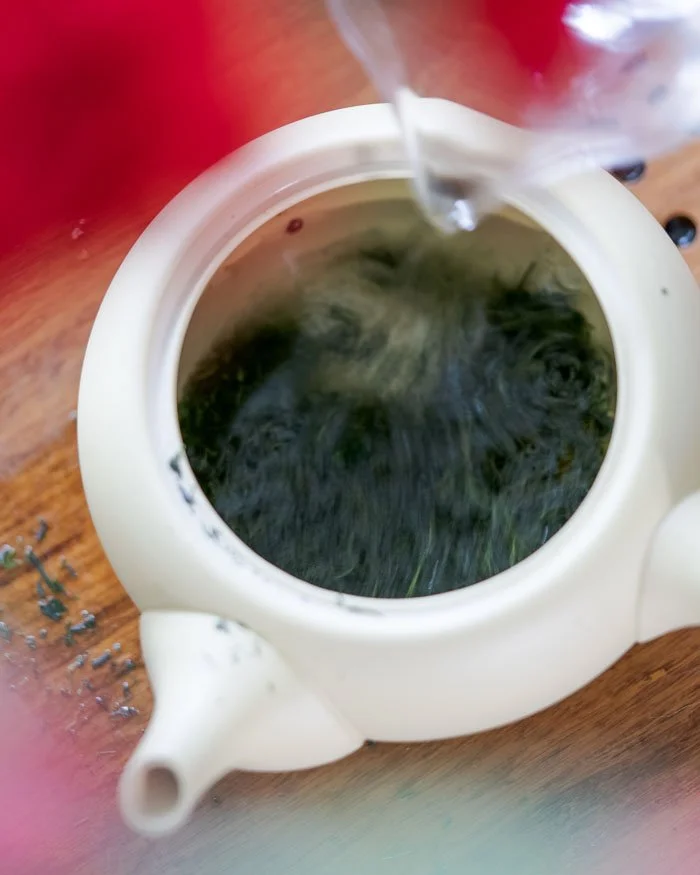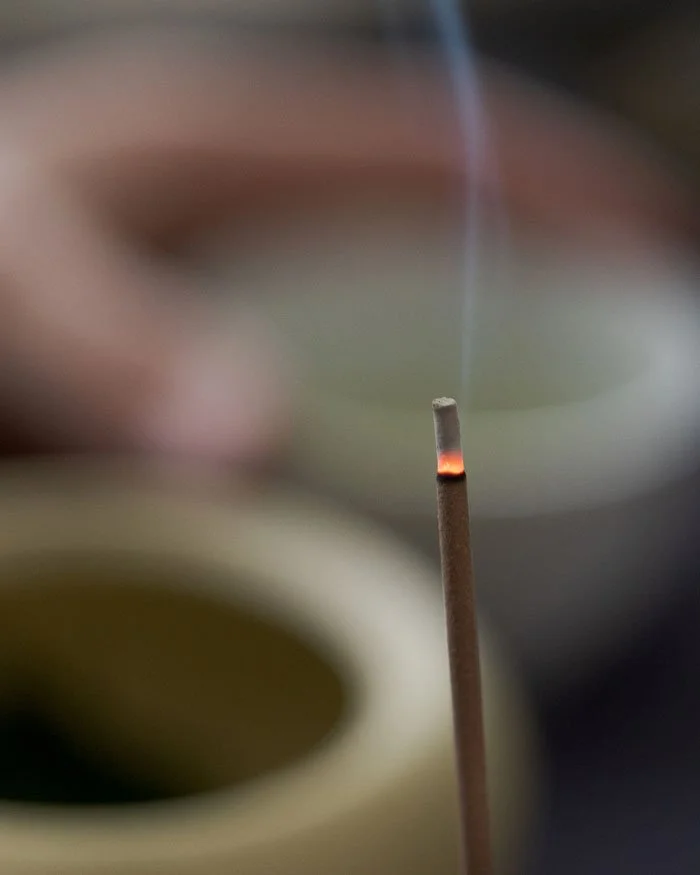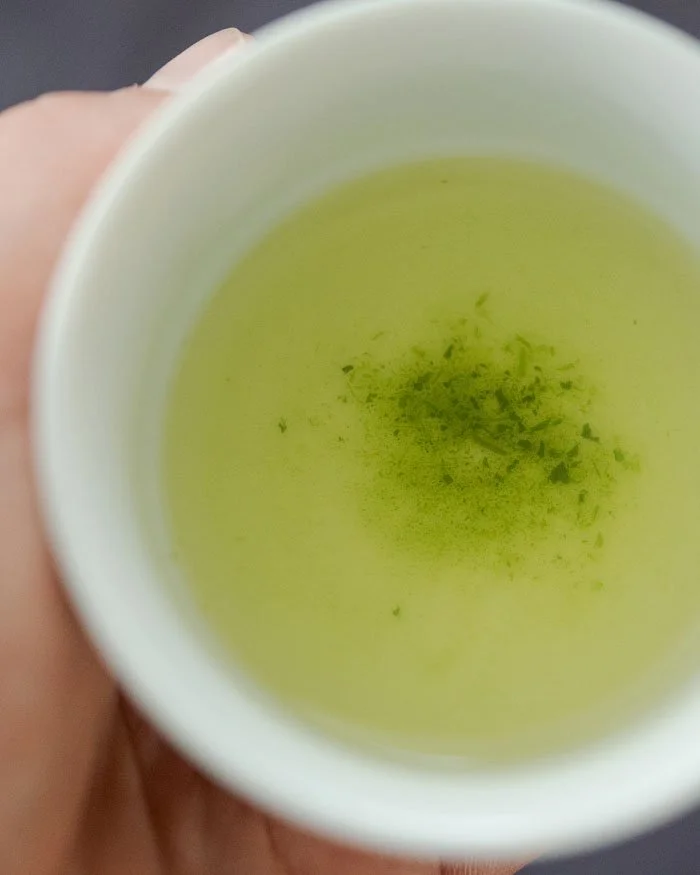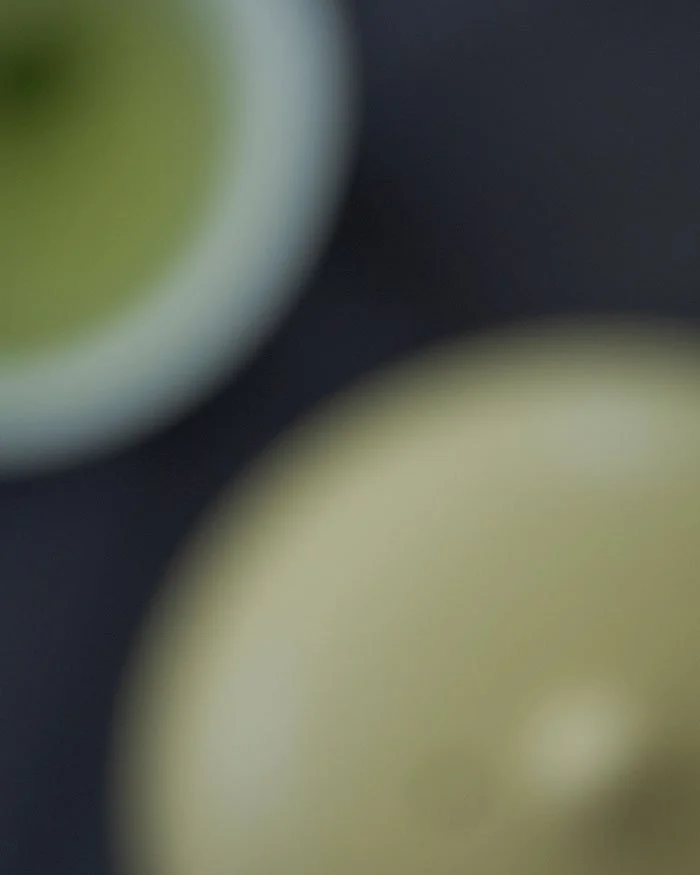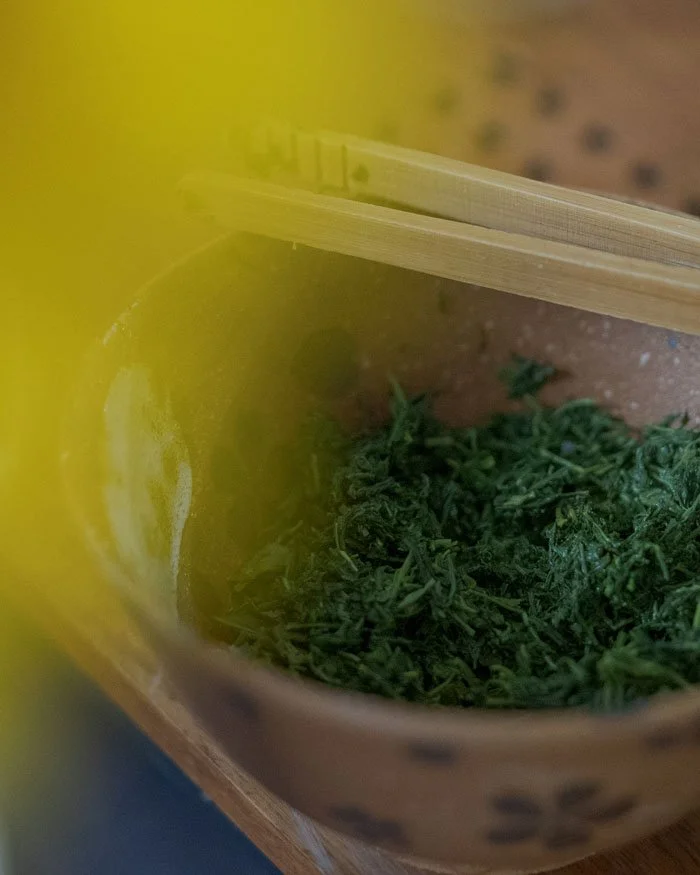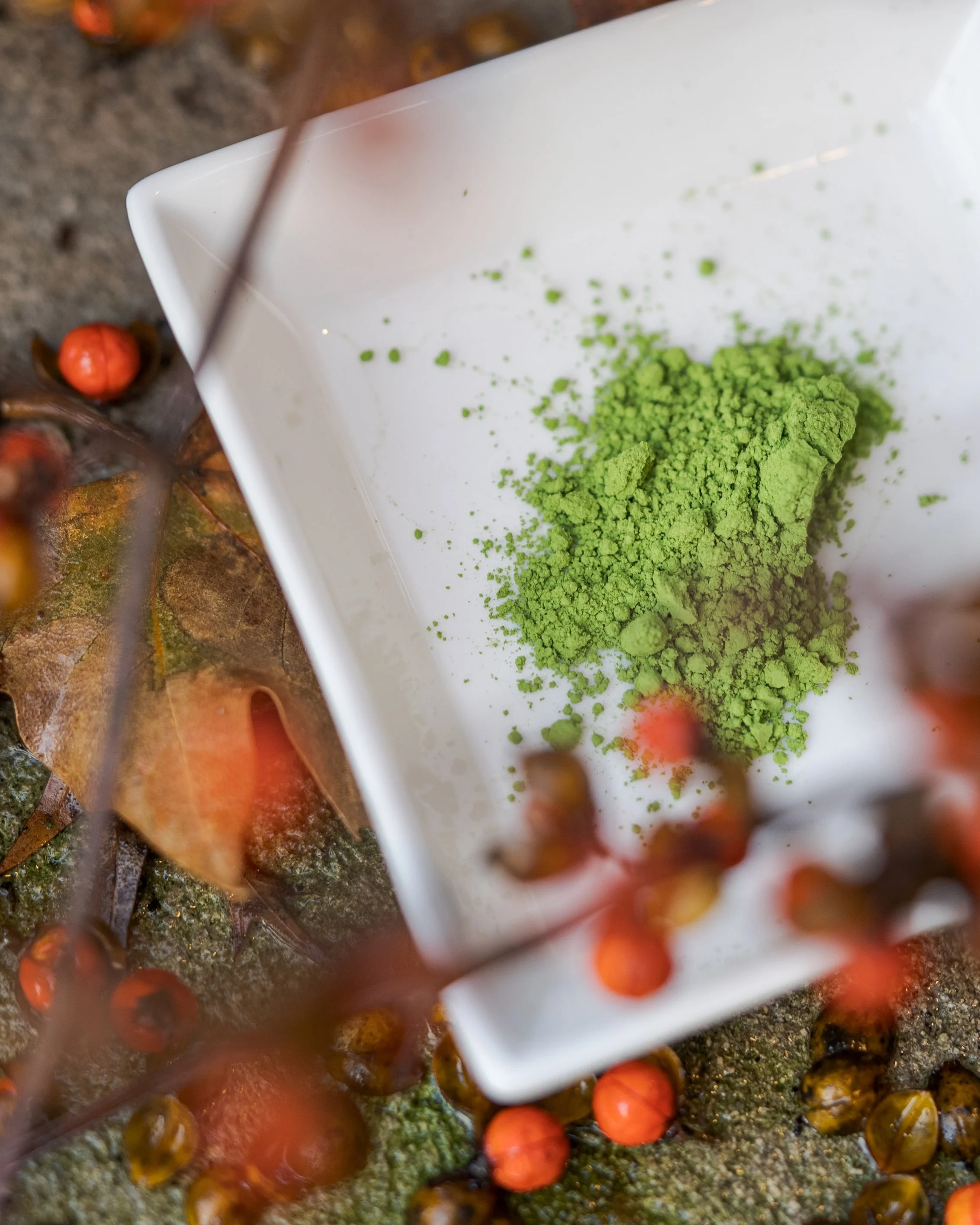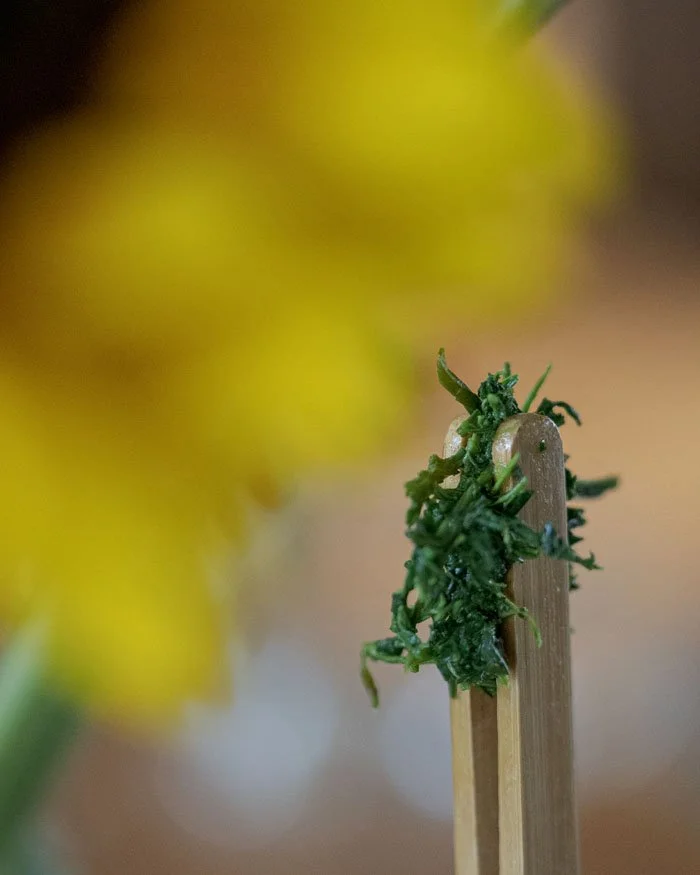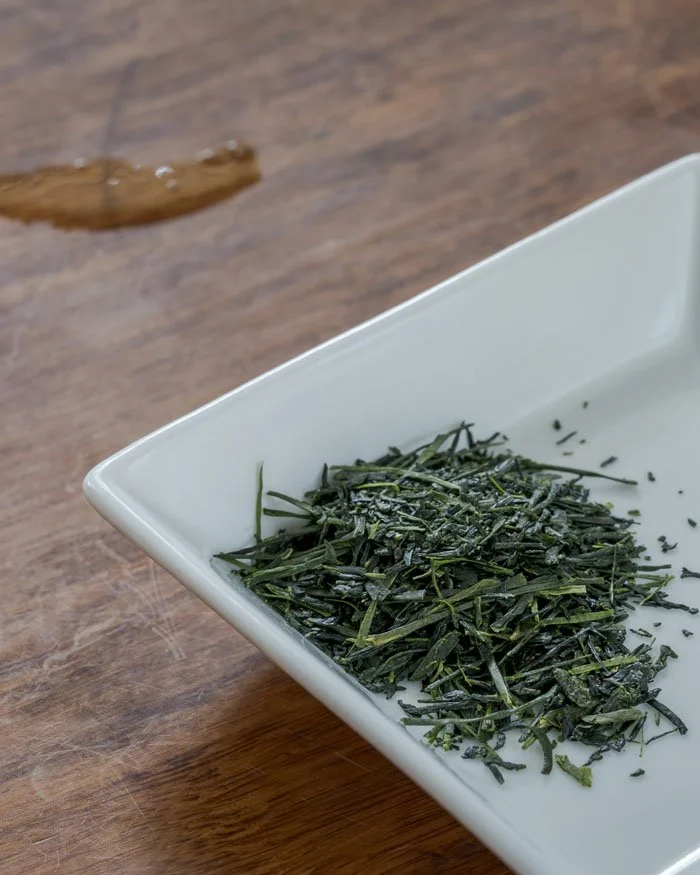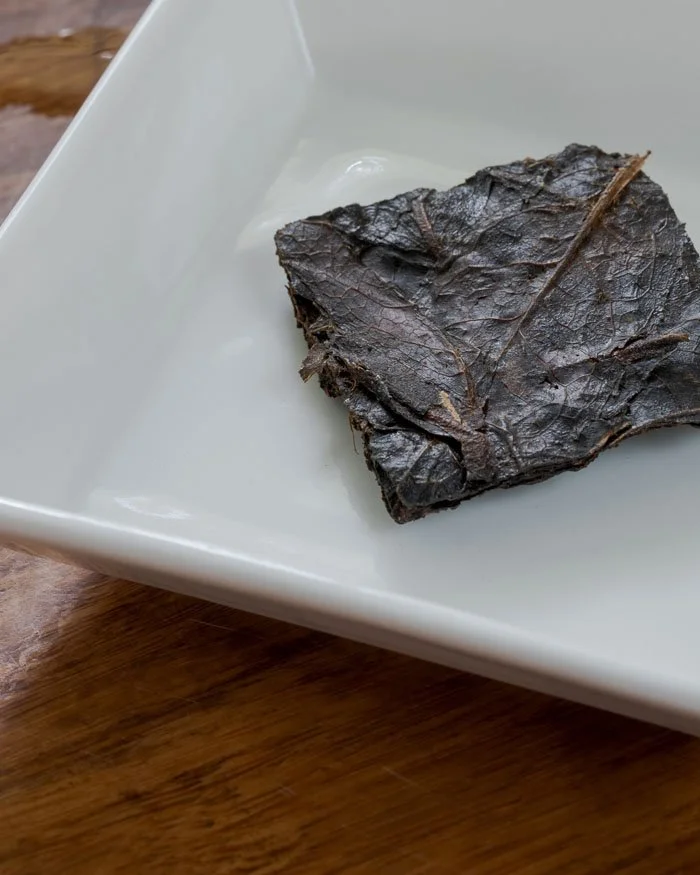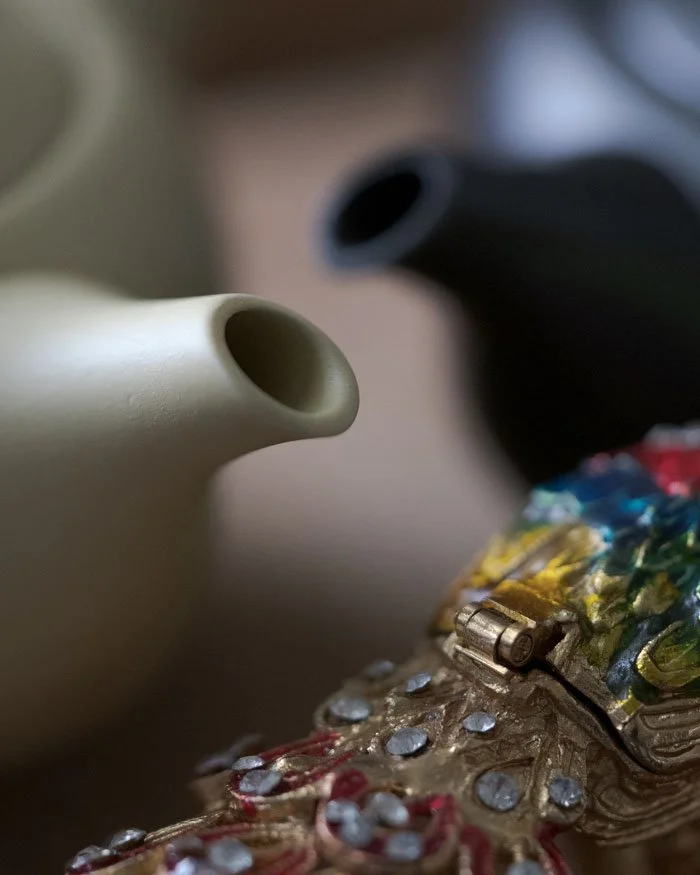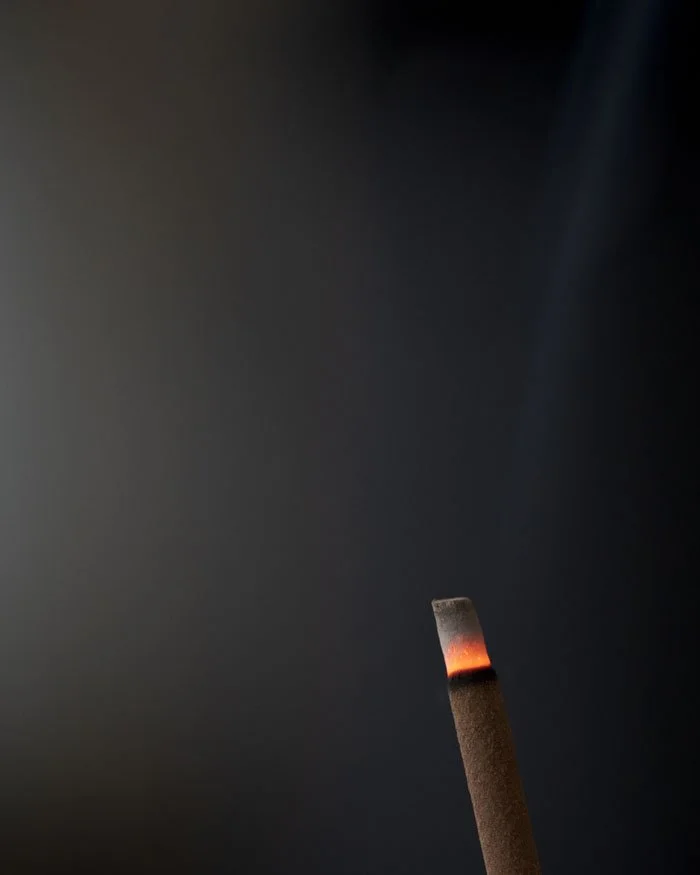Understanding Japanese Tea - A Brief Guide
To Westerns, tea is tea --
But it turns out there are remarkable differences between teas from different regions.
Japan has totally different flavor profiles, cultivars, and even philosophies when it comes to tea from other regions including China.
I realized that there weren’t many reader-friendly guides out there that focus on Japanese tea.
So, I put one together.
Tada.
We’ll cover XYZ
4 Reasons Japanese Tea is Unique
When it comes to Japanese tea, umami is king.
Umami is the savory note associated with mushrooms, tomatoes -- MSG.
Japanese teas are often intentionally processed to highlight or develop more savory notes.
While savory notes can appear in Chinese teas, the quality is one of many prized, and not intentionally highlighted through production methods.
1 - Umami (Savory taste) is the Most Prized Feature in Japanese Tea
See, savoriness in tea comes from an amino acid known as L-Theanine.
The plants develop L-Theanine in the root system of the plant…
As the L-Theanine works its way up to the leaves it is transformed by sunlight into astringent tasting Catechins.
Quick Tip: Catechins are a group of antioxidants that are responsible for many of the health benefits of tea.
The Japanese discovered that by shading the plants with reeds or tarps, they could prevent the transformation of L-Theanine into catechins.
The end result is tea with more L-Theanine, and thus, stronger umami tastes in the tea.
This covering/shading practice (called “Kabuse” in Japanese) is used to make many famous Japanese teas including:
Matcha
Gyokuro
Kabusecha
While not all Japanese teas are shaded, this does give inform us what qualities are prized in Japan.
2 - Processing Favors Green Tea & Freshness
In addition to Umami tones, the Japanese tend to prefer freshness in their brews.
This manifests itself in two ways:
Out of the 6 categories of teas, the Japanese consume and produce primarily Green Tea.
A preference for steaming tea over pan-roasting it.
To make green tea you need to stop the enzymes in the leaf from oxidizing.
Just like cutting into an apple, and it turns brown…
Tea leaves will do the same.
Quick Note: That’s why Red Tea (known as Black Tea in the west) is…
It’s a tea that’s been allowed to fully oxidize like a brown apple.
This is why red tea often has malty, dried fruit notes.
Quick Note: That’s why Red Tea (known as Black Tea in the west) is…
It’s a tea that’s been allowed to fully oxidize like a brown apple.
This is why red tea often has malty, dried fruit notes.
You need a way to “lock” the tea leaf so it doesn’t oxidize.
This is done by heating the leaf to a specific temperature to denature the enzymes within it.
This step is known as Sassei in Japanese, or “kill green” in English.
You can heat the leaf a few different ways.
Many Chinese teas “kill green” by firing the tea leaves in a wok.
The resulting tea will feature nutty, and roasted tones!
However, the Japanese prefer the pure, fresh taste of tea.
And opt to steam the leaves instead, allowing more of the grassy, sea-weedy tones to be more transparent.
Mixing it Up: Of course, there are steamed Chinese teas and wok-fired Japanese teas such as Kamairicha.
3 - Blending Tea is Expected
Blending is a technique used not just in the tea world, but also in the Scotch and Wine world.
By taking teas from different regions, harvest dates, or even cultivars…
Tea producers can:
Adjust the price of the tea, to make it more economical by blending higher price and lower price materials.
Smooth out the taste of the tea, as a scotch blender may do.
Or frankly, just experiment and find unique & tasty combinations.
With Chinese Tea, blending is usually not found in higher priced products…
As there is more of a focus on single-origin teas.
However, in Japanese tea, blending is much more prolific, even for higher price products.
Recently, there have been more single-estate Japanese teas available on the market…
But by and large, most tea -- especially Matcha -- is blended.
Translation please: Translation please: Blending is known as “Gogumi” in Japanese.
4 - Tea is Produced in Two Separate Stages (Aracha and Shiagecha)
Most tea produced in the world is done in one complete process - usually at one facility.
Tea leaves arrive at the processing plant, the tea is processed to the final product, and then shipped out to the wholesalers.
In Japan, this is not the case!
Japanese tea production is broken into two separate and distinct stages.
The first is known as Aracha.
Aracha means “rough tea” or, unrefined tea.
Basically, the tea producer runs through all the steps to produce a green tea:
Harvesting the Tea Leaves.
Steaming the leaves to “kill green.”
Rattling to shake off water.
Rolling stages slightly crush and dry the leaves.
At this stage we have Aracha -- the tea leaves are almost done
But they still have:
Crushed bits and stems that need to be filtered out.
A bit too much moisture (5%) needs to be dried out.
Rather than finish those two steps, the Aracha is shipped to the wholesalers.
And they are the ones who finish the production…
With a final filtering/sorting.
With a final firing to fully dry the leaves.
The finished product is known as Shiagecha (finished tea.)
The wholesaler will then blend the tea based on their own taste and price considerations.
5 Famous Japanese Teas
There’s a wide range of Japanese teas out there to experience on your tea journey…
This blog post might be a little longer if I attempted to list them all (and frankly, I’d likely fail at that task.)
But I do want to share a few famous teas from Japan that I think all tea enthusiasts should experience.
1 - Matcha, Ground, and Consumed as a Full-Leaf
Even people not all that into tea know matcha.
There are a few good reasons for it:
The velvet, emerald green is visually striking.
Plus there’s been a lot of (well deserved) press on abundant health benefits.
In the case of Matcha, the tea is not consumed via infusion.
Confusing Infusing: An infusion is steeping the tea and drinking the water-soluble compounds that leach out into the water.
Instead, the entire leaf is ground up and consumed.
(Think of it like drinking water spinach was boiled in versus drinking a spinach smoothie.)
Good matcha should be rich with umami notes, as it’s shaded weeks before harvesting.
Which, as I mentioned earlier, increases the L-Theanine content and thus savory taste.
I wrote a deep (but easy to read) guide on what is Matcha that you can read and catch up on here.
2 - Gyokuro, Rich in Umami, but not Ground Up
To me, Gyokuro is like the steeped version of Matcha.
It’s deeply rich umami (almost overwhelmingly so) where it’s not necessarily a daily drinker.
It also happens to be fairly expensive to produce (because of the shading, where farmers wrap entire plantations with reeds or synthetic covers.
When it comes to brewing, lower temperatures are used to extract highly soluble L-Theanine
While resisting astringent catechins and bitter caffeine (that extra out faster at higher temperatures.)
Thus making drinking the Gyokuro even more sweet, savory and intense.
And even the brewing methods used to make Gyokuro
3 - Sencha, the Fresh and Classic Japanese Tea
Sencha is your go-to, classic, fresh Japanese green tea.
In fact, over 80 percent of green tea in Japan is Sencha.
The process for making a recognizably needle-shape Sencha came from a Buddhist Monk (like most Japanese tea!) Nagatani Soen in the late 1730s -- near Kyoto.
Unlike Matcha and Gyokuro, it is not usually shaded.
So you’ll have a bit more bitterness and astringency in the resulting tea.
You can modulate the bitterness and astringency, and thus sweetness and savoriness, by brewing:
•At cooler or warmer temperatures.
•For longer or shorter brewing times.
•With more or less water or tea leaves.
When it comes to harvesting…
The best Sencha is harvested in early spring.
The first harvest of Sencha plucked (with the bud and two or three leaves) is known as Ichibancha.
As with most tea, the first harvest in spring is the best:
The first harvest has the most nutrients in the buds.
The buds and leaves are equally sized, making harvesting consistent.
Later harvests (summer, fall) are typically more bitter.
4 - Hojicha, the Economical Roasted Green Tea
Hojicha is one of my favorites.
Due to its dark brown color when brewed, many people don’t realize that Hojicha is green tea.
But unlike other green teas, Hojicha isn’t specific to one processing method.
Translation please: In Japanese, Hoji means Roasted, while Cha means tea. Hojicha translates to Roasted Tea.
Hojicha is made by roasting green tea leaves, or even wooden stems from the tea plant.
Hojicha is economical as it can be made from low-quality Sencha (from the second or third harvest -- which is known as Bancha)...
But it can also be made from any kind of green tea or even twigs from the tea bush..!
You can make Hojicha yourself at home just by cooking green tea over a fire on low heat, careful not to burn it.
Typically Hojicha is sweet, roasted, and rich.
Depending on what the source material is, the taste can be further altered.
Twigs will make a more woody Hojicha, while green tea leaves will be more astringent.
5 - Kamairicha, Pan Fired like Chinese Tea
All of the teas in this list (and most teas in Japan) are “fixed” by steaming.
Remember: “fixing” or “kill green” is the processing step in green tea to stop the natural enzymes in the leaf from oxidizing the tea.
But Kamairicha doesn’t fit the mold.
Instead of being steamed, Kamairicha is pan-fried just like how many green teas in China are.
This imparts roasted and nutty notes that aren’t all that common with Japanese teas.
But just like Japanese teas, you’ll still get a lot of the characteristic umami notes.
And More…
As mentioned earlier, there are a wide array of other famous Japanese teas.
While most teas in Japan are green teas… there are some red and black teas as well.
By red tea, I’m not talking about Rooibos (which is not even tea… it’s a Tisane) - I’m referring to what is known as “Black Tea” in the west.
When you buy black tea at the grocery store, you’re actually buying red tea.
Early in the tea trade between the west and east, there was a mix-up…
And the name “black tea” stuck.
On the Ooika blog… we refer to “black tea” as red tea.
Japanese red tea is not too common, but it exists and is known as Wakocha.
There also exists true Japanese black tea.
True black tea is a post-fermented green tea - the brew is pitch black!
And is called “Kurocha.”
Kuroi means black in Japanese…
Anyway, an example of this is Goishicha:
This tea is stacked in layers, fermented with lactobacillus, and cut into squares.
It has a characteristic bold and sour flavor.
Understanding Cultivars and Zairai
When I first got into tea, the idea of Cultivars confused the hell out of me.
But it turns out… it’s not all that complicated.
And understanding Japanese tea culture… comes with understanding cultivars.
But before we get to cultivars, let’s first discuss Zairai.
What is Zairai?
In Japanese, Zairai means “native.”
So when we talk about Zairai in regards to tea, what we’re discussing is tea plants grown from seeds.
Because these tea plants (Camellia Sinensis) are grown from seeds, it means they are all genetically different.
Now think about a tea garden growing hundreds of bushes, all genetically unique…
The resulting tea will be similar to a blend - blending all the unique characteristics from all the unique tea bushes.
This is pretty cool to think about.
But there are downsides to having genetically different plants:
The plants will grow, and bud at different rates and different times -- which makes harvesting less efficient and frankly… difficult to maintain quality.
Processing the tea is difficult, as buds and leaves are different sizes.
The final tea product is, as stated, more like a blend - so there’s no strong identifiable tastes and notes.
Maintaining quality due to differences in the tea leaves means doing much of the work by hand, reducing the profit margin.
Because of this, Zairai plantations are rare in Japan -- accounting for only around 2% of the tea plantations in the country.
What Cultivars are, and Why they are so Popular
Imagine a Zairai tea plantation…
Well, a farmer might recognize that one bush on his property is particularly special.
For example, it might have a higher yield, be more resistant to pests, or simply taste better than the other plants.
So, the farmer can take a clipping of that bush and plant it -- creating a clone. An exact genetic copy.
By doing this, the farmer can have an entire plantation that only grows clones of one bush -- this is known as a cultivar.
It might surprise you to know that 98% of Japanese tea plantations use Cultivars.
The reasons are pretty simple to understand:
The plants grow at the same rate, making harvesting easy.
Cultivars have predictable tastes and qualities.
Many cultivars have a historical significance that can be appreciated.
How are Cultivars Chosen for the Type of Tea?
Remember, Cultivars remain unchanged for long durations of time.
In fact, Japan’s most famous cultivar, the Yabukita, was singled out from a Zairai plantation in the late 1910s by a young tea farmer in Shizuoka named Hikosaburo Sugiyama.
This one cultivar now dominates Japanese tea.
Yabukita King: Over 3/4th of all tea in Japan is made from the Yabukita cultivar alone.
I mentioned before many types of Japanese tea:
Matcha, Gyokuro, Sencha for example…
The question is, how do tea farmers choose a cultivar to use to make their type of tea?
The truth is, you can use any cultivar for any tea that you’d like.
But certain cultivars lend themselves better to certain styles of tea.
For example, the Sayamakaori cultivar is very fresh and sweet… but has a relatively low amount of umami.
This means it wouldn’t be your first choice in a tea-like Gyokuro that’s famous for lots of umami!
2 Famous Tea Growing Regions in Japan
There are many tea regions in Japan.
But in the spirit of keeping things brief…
I’ll just talk about 2:
Shizuoka
Kyoto
(Also, I wrote a guide on the best cities in Japan for Matcha here.)
1 - Kyoto, Renowned for Uji Matcha
First up is my personal favorite tea region in Japan -- Kyoto.
Kyoto contains many subregions such as Shiga, Nara, Uji, and more.
Uji is particularly famous for its highly umami and rich shaded Matcha tea.
Uji is also one of the largest centers in the county (next to Shizuoka) for blending and wholesaling tea.
Because of the region’s famous quality, tea from Kyoto -- and specifically Uji -- fetches a high price on the market.
2 - Shizuoka, the Highest Volume of Tea in Japan
When it comes to the volume of tea production, nothing in Japan beats Shizuoka.
Not only does it have the largest volume of production, but it also has the most amount of land used for tea production.
As mentioned before, the famous cultivar Yabukita comes from Shizuoka…
And in the prefecture, you’ll find everything from large-scale mass-produced teas to small pricey single estates.
This is because Shizuoka has both:
Mountains terrain, that produces a higher quality product that is hard to scale for mass production.
Flat terrain, easy to grow, and farm large volumes of tea at the cost of a lower quality product.
In general: the best tea is higher elevation without direct flat sunlight.
But harvesting tea on mountainsides is not easy so it’s usually reserved for higher quality wholesalers.
Experiencing True Japanese Tea
All of this text means little if you don’t get to experience the teas yourself.
I’d really recommend that you do so!
But overall, here are a few key pointers to keep in mind:
When it comes to Japanese tea, Umami is king.
Shading (covering the plants with reeds or tarps to block light) is a common technique to increase the umami taste.
Plantations are either made of individual plants (Zairai) or clones (Cultivars.)
Most tea in Japan is processed and sold in Kyoto and Shizuoka regions.
Of course, there are a lot more details left out!
But this is a good little guide to get rolling.
MORE ON TEA

